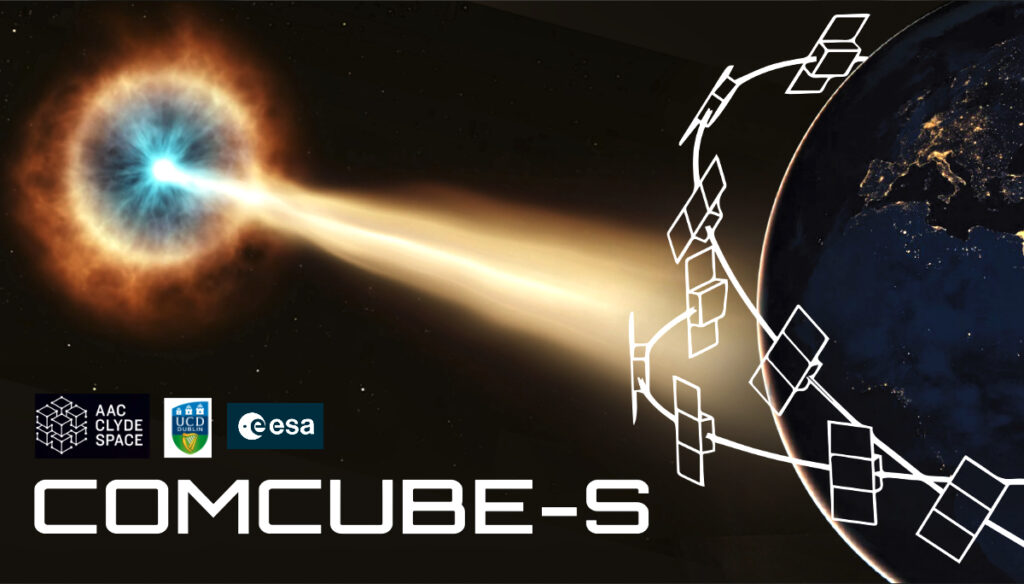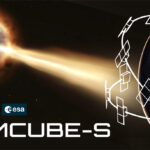
AAC Clyde Space has won an order worth 0.12 million euros (approx. SEK 1.3 million) from University College Dublin for a mission study in the first phase of the development program COMCUBE-S.
The study will assess the technical feasibility of the proposed mission and marks an initial step in a structured process that may lead to a CubeSat Swarm In-orbit Demonstration mission. The study is scheduled for delivery in the fourth quarter of 2025.
COMCUBE-S is a technical project aiming to develop new capabilities for observing Gamma Ray Bursts (GRB)—short-lived and extremely powerful events in space. By delivering faster and more detailed information about these phenomena, the mission will support scientists in making new discoveries about the nature and origins of GRBs.
The project follows ESA‘s established In-Orbit Demonstration process and begins with a so-called Phase A study, which assesses the mission’s technical feasibility. AAC Clyde Space is responsible for the system design in this initial phase, working in close collaboration with the project lead, University College Dublin.
A decision on further development is expected at the end of 2025, once the study is completed. A central element of COMCUBE-S is the use of a satellite swarm: a coordinated network of many small satellites operating together on-orbit. The swarm enables rapid, multi-angle observations of short-lived space phenomena and improves the ability to measure polarization—a key property of gamma-ray bursts that can help reveal how these violent events originate.
To achieve sufficient coverage and accuracy, the project ultimately aims to build a constellation of as many as 27 satellites. The assignment strengthens AAC Clyde Space’s position as a supplier of complete satellite missions—from design to operations—in technically advanced projects. It provides an opportunity to apply the company’s own components, systems engineering and methods for constellation development.
Experience gained through the ESA-funded xSPANCION program, in which AAC Clyde Space developed scalable solutions for satellite swarms, will be directly applicable. The work forms part of a broader collaboration with University College Dublin to advance the COMCUBE-S mission. The selection of COMCUBE-S from among seven European finalists in ESA’s SysNova Challenge confirms the strength of the technical concept and the partner constellation.
This project demonstrates how we translate technical expertise into real-world results. COMCUBE-S clearly illustrates our ability to take the lead in missions that combine scientific objectives with the highest technical demands,” said AAC Clyde Space CEO Luis Gomes.
COMCUBE-S represents a significant step forward in our ability to study gamma ray bursts and unlock new scientific insights into the most energetic events in the universe,” said Lorraine Hanlon, Director at UCD Centre for Space Research.
About COMCUBE-S
The project is led by University College Dublin and aims to improve understanding of gamma-ray bursts – extremely bright and short-lived explosions that occur, for example, when neutron stars collide. Using a swarm of satellites, the project will collect polarimetric data and localise these events in real time. This opens new opportunities in so-called multi-messenger astronomy, where different types of space data are combined to provide a more complete picture of cosmic phenomena. AAC Clyde Space is responsible for system design in the project’s initial phase and serves as the industrial partner in the first delivery. COMCUBE-S is one of two selected concepts from ESA’s SysNova Challenge and is supported through the Discovery & Preparation programme. The Consortium partners also include Laboratoire de Physique des 2 Infinis Irène Joliot-Curie (IJCLab), France, Commissariat à l’Energie Atomique et aux Energies Alternatives (CEA), France, and Kungliga Tekniska Högskolan (KTH), Sweden.

